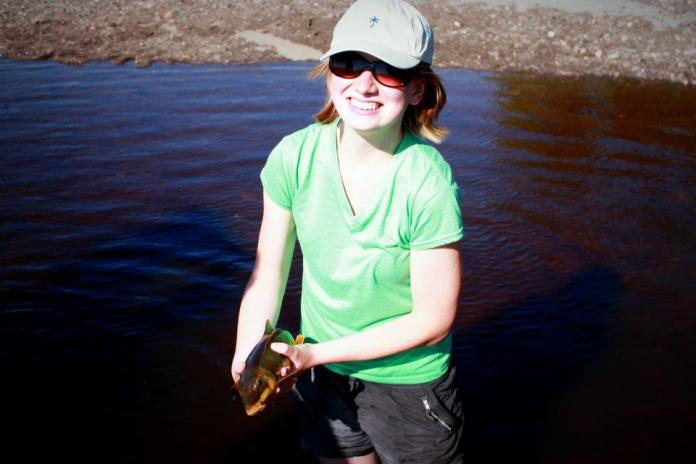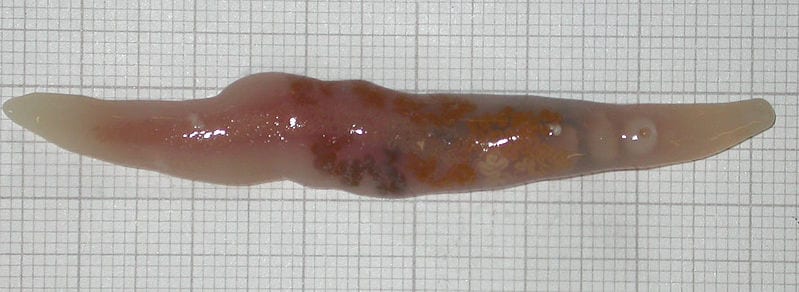Have you ever looked at your favorite pet and wondered exactly what's going on behind those soulful, amber eyes? For a long time, scientists believed that only humans possessed something called Theory of Mind, that is, the understanding that one is a conscious being, and that others also possess a consciousness of their own. Theory of mind develops through childhood. Every time a child pretends to be a doctor or a firefighter, they are putting themselves into someone else's perspective. Children will also often ask simple binary questions on opinions (e.g., what's your favorite color?) and this is another way they are developing an understanding that other people have different likes/dislikes or emotional states than themselves. Once a child hits the age of 4-5, it is believed they have fully developed theory of mind.
Scientists typically evaluate theory of mind through putting the subject through something called “false-belief tasksâ€. A false belief task evaluates whether the subject recognizes that others can hold false-beliefs about the world. A famous example is called the “Smarties†problem, where experimenters hand a child a box with the label “Smartiesâ€. The researcher asks the child what they believe is in the box, which of course they respond “Smartiesâ€. The child then opens the box and realizes that there are pencils rather than candy in the box, which of course is a real bummer for everyone involved. The researcher then asks what the child thinks someone else might think is in the box. If the child answers “pencils†the child has failed the false-belief task.
Now, any dog owner would tell you that their animal possesses theory of mind. For example, my dog Rosie will wait until I leave the room to try and sneak some cheese off my plate.
Proving that animals possess theory of mind is challenging however, especially because you can't just ask them what they're thinking. Is Rosie waiting to sneak the cheese because she knows that I would hold the false belief that the cheese remained untouched while I was out of the room? Or is she sneaking the cheese because she has the instinct to avoid a competitor's eyes when consuming a valuable resource?
The first element to developing a theory of mind is recognizing one's own consciousness, and researchers have used several methods to try to establish if animals recognize a “selfâ€. One method is to use the mirror test. A researcher will anesthetize an animal and then put a sticker or other marker on the animal. Once the animal awakens, the researcher places a mirror in front of the animal. If the animal immediately reaches to their own body to remove or investigate the marker, the animal is thought to have demonstrated self-awareness because they recognize that the mirror is reflecting their own image. A wide range of animals have passed this mirror test, including great apes, dolphins, elephants, magpies, and the cleaner wrasse. Surprisingly, animals like sea lions, dogs, grey parrots and octopuses have failed. However, dogs have passed a different body-awareness test that the researchers argue is more ecologically relevant. In this test, a dog is asked to sit on a mat and try to move it. If the dog quickly realizes that they must get off the mat in order to move it, they have passed the test. The researchers argue this is a more accurate test of a dog's self-awareness than the mirror test, because what dog cares about what it looks like in a mirror?
A second component of theory of mind is something called “joint attentionâ€. That is, the shared focus of two individuals on an object, where the first individual can alert another by means of eye-gazing, pointing, or other non-verbal indications. This is something where our domesticated animal friends excel. In one famous experiment, called the “object-choice†task, the dog first learns that they can get a treat for approaching either of two identical cups. The dog then watches their person point to a cup, and the test is if the dog goes to the indicated cup. Dogs are highly responsive to this gesture, they'll even go to the indicated cup when the person is standing close to the wrong cup. Wolves and chimpanzees, however, do not do as well or at least do not follow our gestures as flexibly as dogs. It appears as if a key feature of the domestication process was for dogs to evolve the ability to take cues from humans, even gazing at the human for help to solve an unsolvable task when similarly socialized wolves do not.
While we will probably never know exactly what is going on in the minds of our animal friends, it is likely that animals think and feel a lot more than we used to give them credit for. After all, evolution generally doesn't create something from nothing. There are lots of intermediate steps and transitional forms between a T-rex and a chicken. Evolution uses the same foundational structures and then tweaks them between species, like the similarities between a human hand and bat wing. So, it follows that the complex consciousness that humans have would share some traits with our mammalian relatives, and that we would find some similarities between our minds and our closest canine companions.
About the Author
Megan Tomamichel is a PhD student in the Odum School of Ecology at the University of Georgia. She studies aquatic disease ecology and is working to understand the causes of deadly disease outbreaks that threaten the world's fisheries. Her favorite past times are aquarium building, hiking, drinking too much coffee and dreaming up names for future pets. You can reach her at Megan.Tomamichel@uga.edu
-
Megan Tomamichelhttps://athensscienceobserver.com/author/megan-tomamichel/October 29, 2020
-
Megan Tomamichelhttps://athensscienceobserver.com/author/megan-tomamichel/March 26, 2020
-
Megan Tomamichelhttps://athensscienceobserver.com/author/megan-tomamichel/November 18, 2019
-
Megan Tomamichelhttps://athensscienceobserver.com/author/megan-tomamichel/








